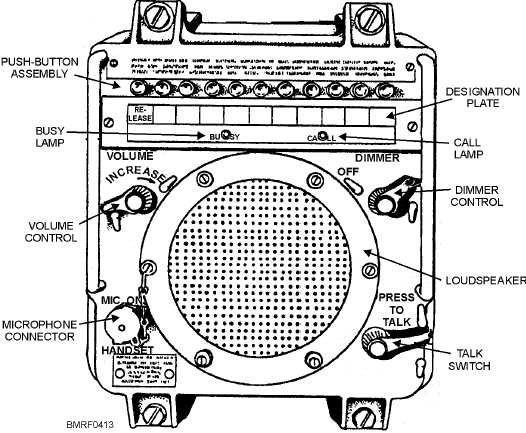The following is an example of how to operate the
intercom. You are on the signal bridge at the 24MC
transmitter (fig. 4-13), and you want to call conn. First,
you push the selector button marked CONN on the
designation plate. We will assume the line is clear for
your message, which means that a steady red light
appears over the signal bridge selector button at the
conn transmitter. When the operator at conn pushes the
signal bridge button, the signal lights at both stations
b e g i n t o f l a s h . N ow y o u c a n o p e r a t e t h e
PRESS-TO-TALK switch and start your message. Any
other station attempting to cut in gets the flashing busy
signal.
The chief disadvantage of the intercom is that it
raises the noise level in any space in which it is located.
For this reason, it seldom is used when sound-powered
telephones are manned. Intercom circuits, which may
be located on the bridge, are identified briefly as
follows:
20MC, combat information announcing system,
connects the same stations as the 1JS phones.
21MC, captain’s command announcing system,
is an approximate parallel to the JA phones.
22MC, radio room announcing system, is a
substitute for the JX phones.
24MC, flag officer’s command announcing
system, is the intercom equivalent of the JF
phones.
DAMAGE CONTROL WIREFREE
COMMUNICATIONS (DC WIFCOM)
Learning Objective: When you finish this chapter, you
will be able to—
Recognize the purpose of DC WIFCOM.
4-19
Student Notes:
Figure 4-13.—A 24MC transmitter.

